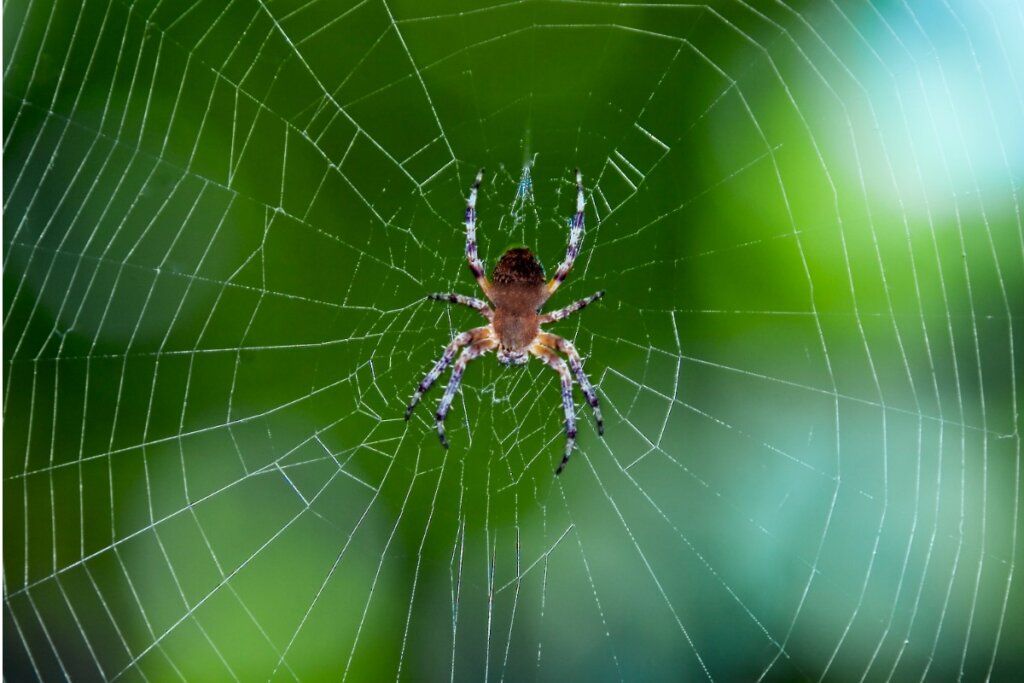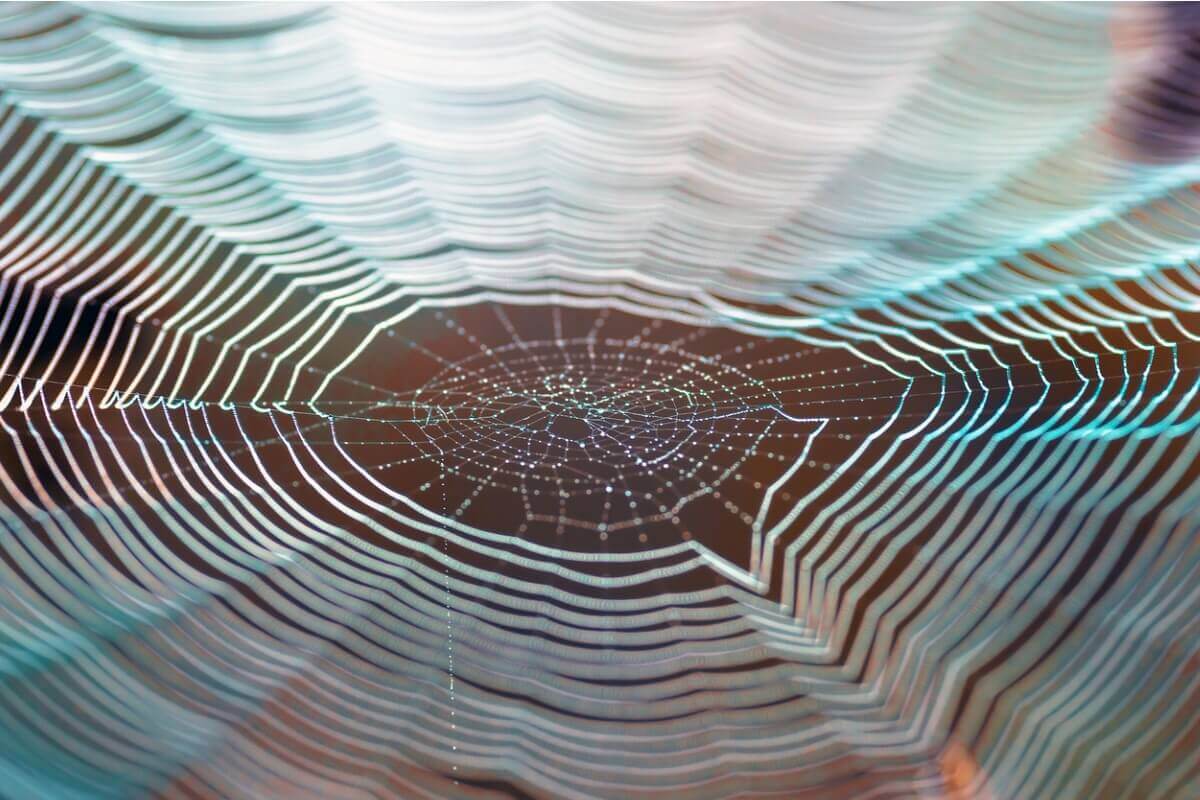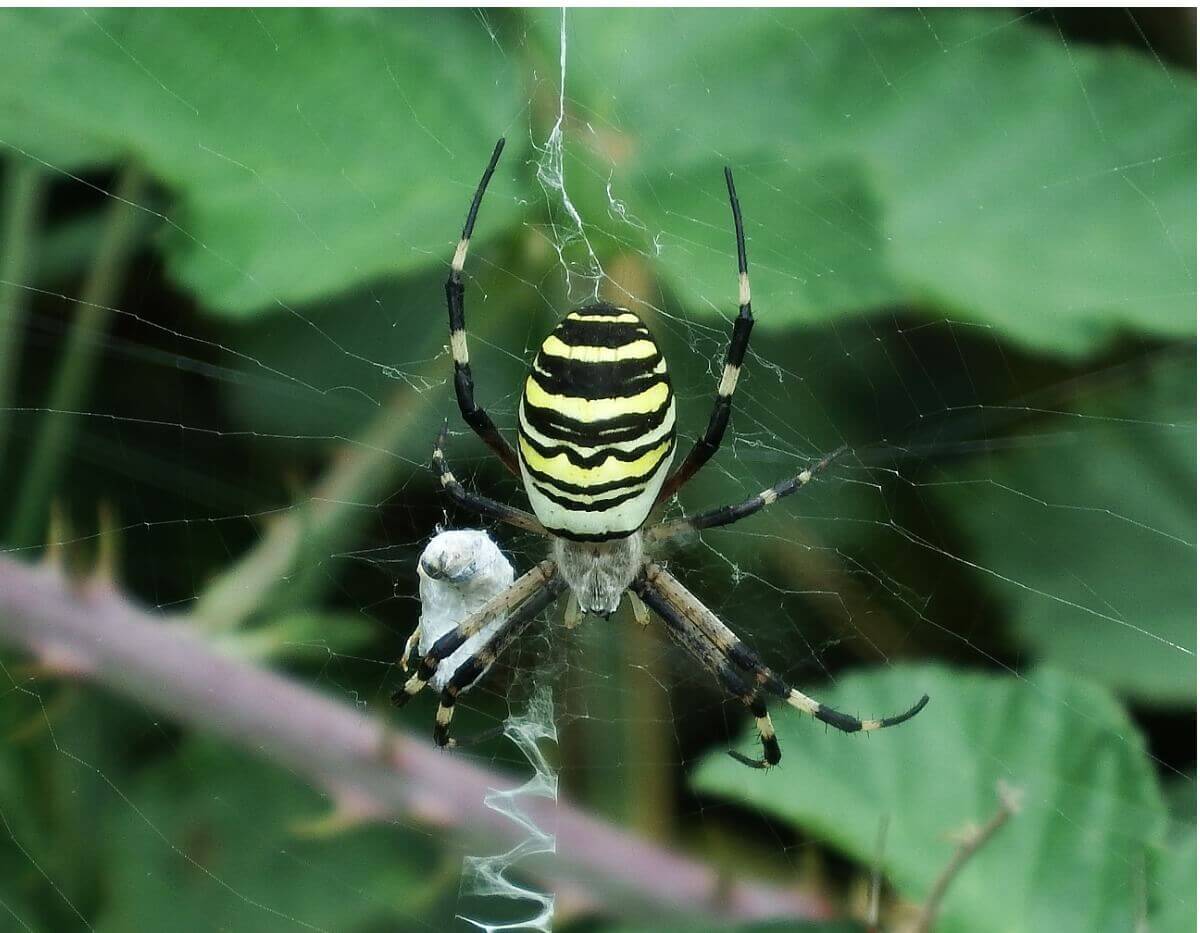Spiders Don't Get Stuck in Their Webs: Find Out Why

The distressing image of a small insect trapped in a spider’s web is familiar to everyone. After this surprising biological interaction, the only thing left to ask is a complex question: What about the arachnids themselves? Why don’t spiders get stuck in their webs?
Believe it or not, the answer was a mystery to science until 2012. Although the phenomenon in question had been studied before, the technology wasn’t sufficiently advanced to provide reliable results and confirm or discard the hypotheses formulated. Here, you can discover the solution to the mystery.
The spider’s web, stronger than steel
The spider’s web is one of those wonders of nature that, the more you investigate it, the more surprising it becomes. The threads with which the spider spins its web are formed by proteins stored in a gland located in its abdomen. The arachnid extracts the substance with its legs and uses it to form silk to make its web.
This is where the surprises begin: If these proteins are brought close enough together, they link up and form the thread. To ensure that this thread doesn’t build up before it leaves the spider’s body, the compounds that will form it are stored in perfect order. Not only that, but they also come out in order to give the silk its characteristic elasticity and toughness.
This way, the silk only solidifies when it leaves the body at the spider’s request.
The structure of the spider’s web is unique in nature. To put its effectiveness in perspective, it’s worth noting that a strand of spider silk is much stronger than a steel cable of the same thickness. It’s also 5 times more elastic than this metal with a thickness 10 times less than that of a human hair. To date, humans haven’t been able to create a material with these characteristics.

Why don’t spiders get stuck in their webs?
In addition to all these incredible properties, spider webs are sticky. You don’t even need to think about the insects that get caught in them; just think how long it takes you to shake off the threads that stick to you when you accidentally bump into one of these webs yourself?
Despite this stickiness, spiders walk on their webs without any difficulties. Why is it different for them? A study published in 2012, carried out by scientists from the Smithsonian Museum, managed to find out the reasons for this phenomenon. We’ll show them to you below.
Spiders don’t get stuck in their webs because of the way they walk
Not all the threads of the web are sticky. Some arachnids intersperse sticky silks with others that are not so that their movement through the web is facilitated by stepping on selected areas that don’t have this ability.
However, to reach its prey, the spider must step on the sticky fibers without any other choice, and even then, it doesn’t get stuck. It does this thanks to the way it walks through the web. The slow, careful gait of the arachnids before they pounce on their food is actually also intended to minimize the force exerted on the sticky surface.
Some spider species feed on other arachnids. In the webs they spin, only they can walk freely, while other spiders are trapped even though they could easily move through their own web. In other words, each web has properties that allow only the species that synthesizes it to move freely.
They have a non-stick chemical coating on their legs
However, walking carefully isn’t enough. Spiders don’t get stuck in their own webs thanks to a non-stick, oil-like coating on their legs. Therefore, they can exert pressure on the threads without getting trapped, which is quite useful when weaving the web.
The scientists in the study cited above washed the spiders’ legs with hexane and water and found that they had a much harder time walking on the web.
It’s thought that spiders spread this substance on their legs with their mouthparts, as they’ve been seen preening their limbs after washing them. However, so far, it hasn’t been possible to prove it with graphic documents because the necessary technology didn’t exist.
Spiders don’t get stuck to the web thanks to the filaments on their legs
In addition, these animals also have a large number of filaments on their legs that minimize the surface in contact with the web. This makes it much easier for them to detach their limbs after each step.
Microscopy shows that when a spider touches a sticky thread, tiny droplets of the sticky substance on the thread are transferred to the hairs on the legs. When removed from the surface of the web, these droplets slide off and fall off.

Nature holds mysteries and wonders in unexpected places. Often, the biggest surprises lie in things that are beyond the reach of human sight, such as a spider spreading non-stick oil on its legs. That’s why you should never underestimate what seems insignificant; If you don’t notice something incredible, maybe you just need a microscope.
All cited sources were thoroughly reviewed by our team to ensure their quality, reliability, currency, and validity. The bibliography of this article was considered reliable and of academic or scientific accuracy.
- Reference: R.D. Briceño and W.G. Eberhard. 2012. Spiders avoid sticking to their webs: clever leg movements, branched drip-tip setae, and anti-adhesive surfaces. Naturwissenshaften. DOI 10.1007/s00114-012-0901-9. Published online: 1 March 2012.
- Hagn, F., Eisoldt, L., Hardy, J. G., Vendrely, C., Coles, M., Scheibel, T., & Kessler, H. (2010). A conserved spider silk domain acts as a molecular switch that controls fibre assembly. Nature, 465(7295), 239-242.
- Sahni, V., Blackledge, T. A., & Dhinojwala, A. (2010). Viscoelastic solids explain spider web stickiness. Nature Communications, 1(1), 1-4.